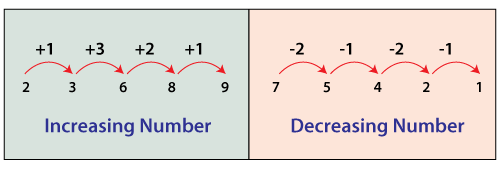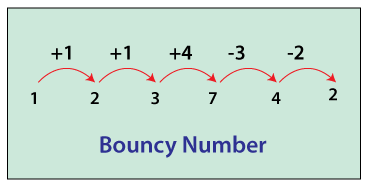Bouncy Number in JavaIn this section, we will learn what is a bouncy number and also create Java programs to check if the given number is bouncy. The bouncy number program frequently asked in Java coding tests and academics. Before understanding the bouncy number, first, we will understand what is increasing and decreasing numbers. Increasing NumbersIn an integer traversing from left to right if the current digit is greater than or equal to the previous digit, the number is known as increasing numbers. In other words, we can say that if no digit is exceeded by the digit to its left is called increasing numbers. For example, 1233, 13689, 112334566, etc. Decreasing NumbersIn an integer traversing from left to right if the current digit is less than the previous digit, the number is known as decreasing numbers. In other words, we can say that if no digit is exceeded by the digit to its right is called decreasing numbers. For example, 321, 88531, 8755321, etc. 
Let's move to the bouncy number. Bouncy NumberA positive integer that is neither in increasing nor decreasing number is called a bouncy number. It means they bounce between increasing and decreasing. In other words, we can say that if the digits of the number are unsorted. For example, 123742, 101, 43682, etc. We observe that in the given number's digits are neither increasing nor decreasing if we traverse from left to right, hence they are called bouncy numbers. 
Note that there is no bouncy number between 1 to 100. The first bouncy number is 101.Steps to Find Bouncy Number
Let's implement the above steps in the Java program and check whether the given number is bouncy or not. Bouncy Number Java ProgramBouncyNumberExample1.java Output 1: 
Output 2: 
BouncyNumberExample2.java Output 1: 
Output 2: 
Next TopicMystery Number in Java
|
 For Videos Join Our Youtube Channel: Join Now
For Videos Join Our Youtube Channel: Join Now
Feedback
- Send your Feedback to [email protected]
Help Others, Please Share










